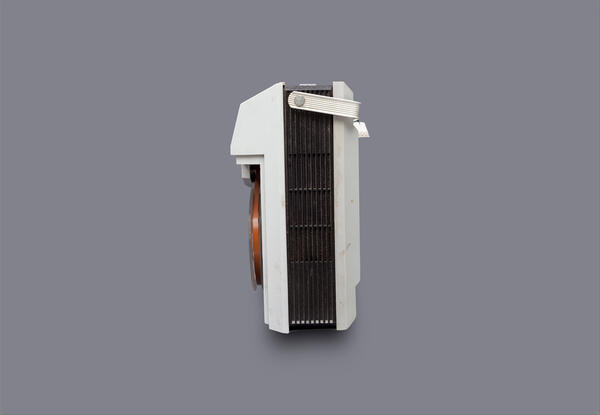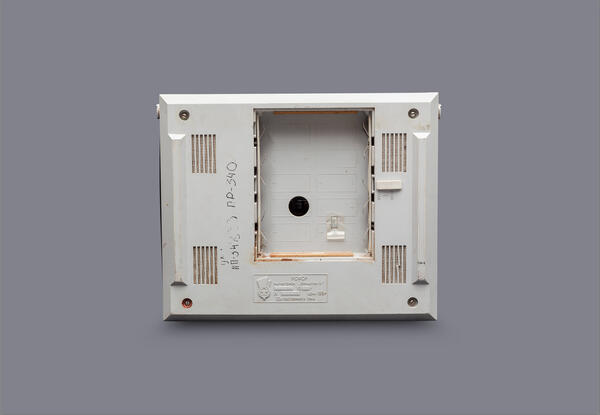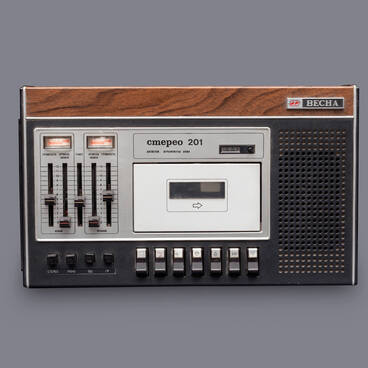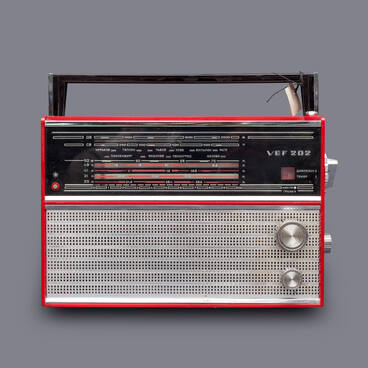In 1968, the Gorky-based Petrovsky Factory started production of the Romantik-3 portable reel-to-reel tape recorder. Whereas abroad such equipment was popular even through the era of cassette recorders, in the USSR devices like that were a rarity and were mostly purchased for official use.
The 1969 model was an improvement of the first Romantik. The key parameters remained unchanged, though the developers modified the design, added a second tape speed, and altered the circuitry. The battery compartment now accommodated 10 (rather than 8) D-type (Mars or Saturn) batteries.
A set of D-type batteries was enough for the recorder to keep running for at least 10 hours. Yet, the stated duration was only guaranteed at 50% of rated output power and provided that the device would be continuously operated for not more than two hours a day as required by GOST 17162-71. The tape recorder could in principle be powered from AC mains, but only through an external power supply adapter.
The Romantik-3 tape recorder had two tape speeds — 4.75 and 9.05 centimeters per second. The design of the tape-drive mechanism allowed using both Type 6 and Type 10 magnetic tapes, as well as foreign analogs.
On the left side of the button control panel was a speed switch button with “4” and “9” positions indicated, which corresponded to different tape speeds. On the right side was a tone control combined with a speaker switch. A volume control knob was also there.
The figures on the controls were purely indicative. The “0” mark could be misaligned relative to the notch on the panel. The factory lubrication of the tape drive mechanism ensured the operation of the tape recorder for 600 hours.
The scope of supply included a dynamic microphone (the MD-64 made by the Tula Oktava factory), a power supply adapter, and cables for recording and playback through auxiliary sources. The weight without batteries was 5.5 kg. The Romantik-3 had a shockproof polystyrene housing and a carrying handle made of duralumin.
The 1969 model was an improvement of the first Romantik. The key parameters remained unchanged, though the developers modified the design, added a second tape speed, and altered the circuitry. The battery compartment now accommodated 10 (rather than 8) D-type (Mars or Saturn) batteries.
A set of D-type batteries was enough for the recorder to keep running for at least 10 hours. Yet, the stated duration was only guaranteed at 50% of rated output power and provided that the device would be continuously operated for not more than two hours a day as required by GOST 17162-71. The tape recorder could in principle be powered from AC mains, but only through an external power supply adapter.
The Romantik-3 tape recorder had two tape speeds — 4.75 and 9.05 centimeters per second. The design of the tape-drive mechanism allowed using both Type 6 and Type 10 magnetic tapes, as well as foreign analogs.
On the left side of the button control panel was a speed switch button with “4” and “9” positions indicated, which corresponded to different tape speeds. On the right side was a tone control combined with a speaker switch. A volume control knob was also there.
The figures on the controls were purely indicative. The “0” mark could be misaligned relative to the notch on the panel. The factory lubrication of the tape drive mechanism ensured the operation of the tape recorder for 600 hours.
The scope of supply included a dynamic microphone (the MD-64 made by the Tula Oktava factory), a power supply adapter, and cables for recording and playback through auxiliary sources. The weight without batteries was 5.5 kg. The Romantik-3 had a shockproof polystyrene housing and a carrying handle made of duralumin.






